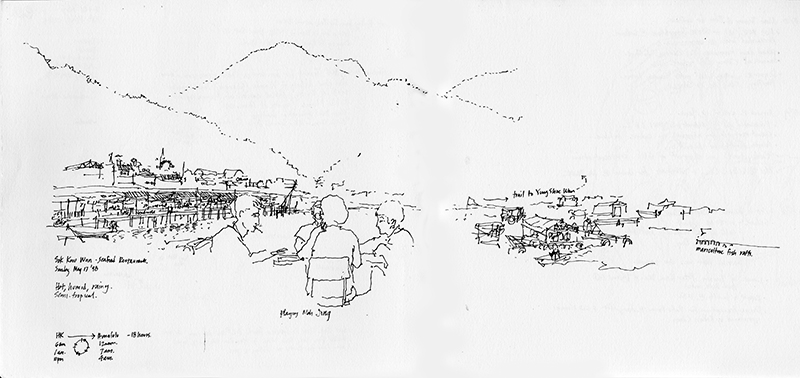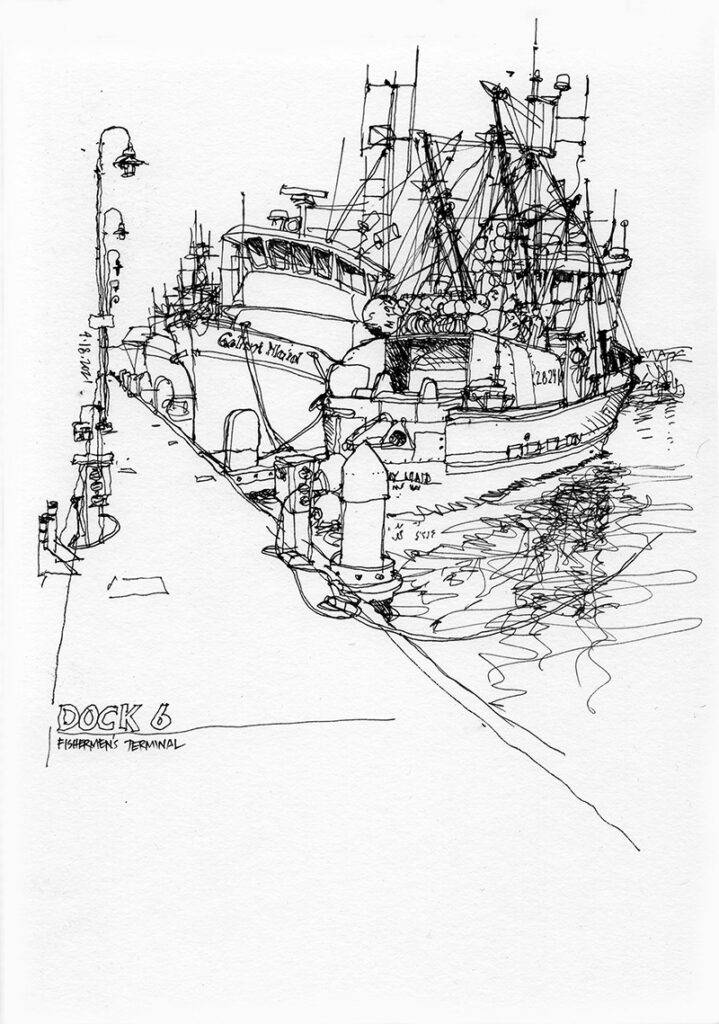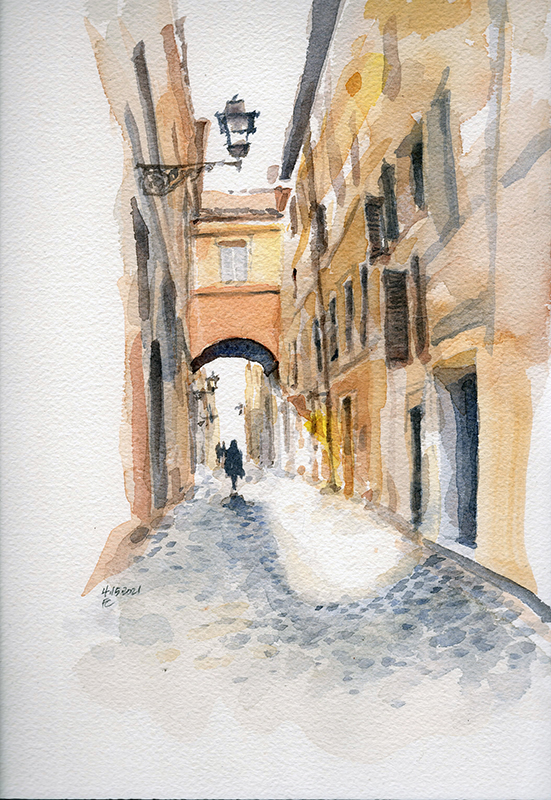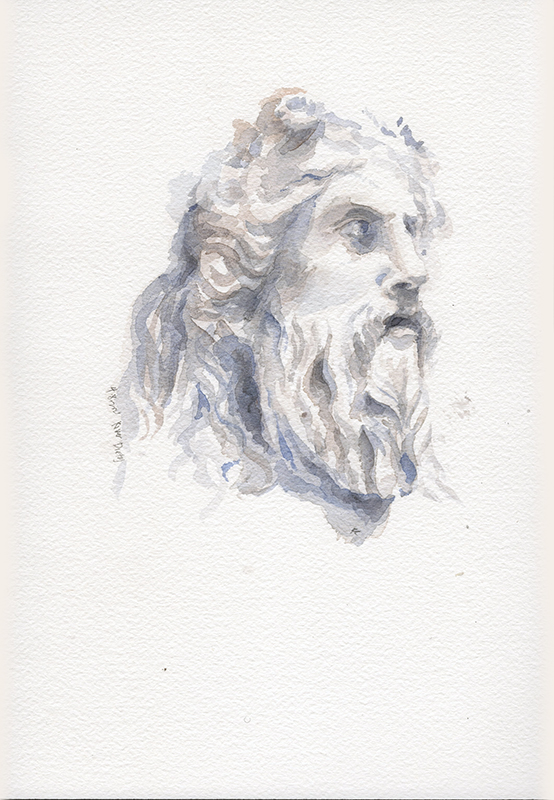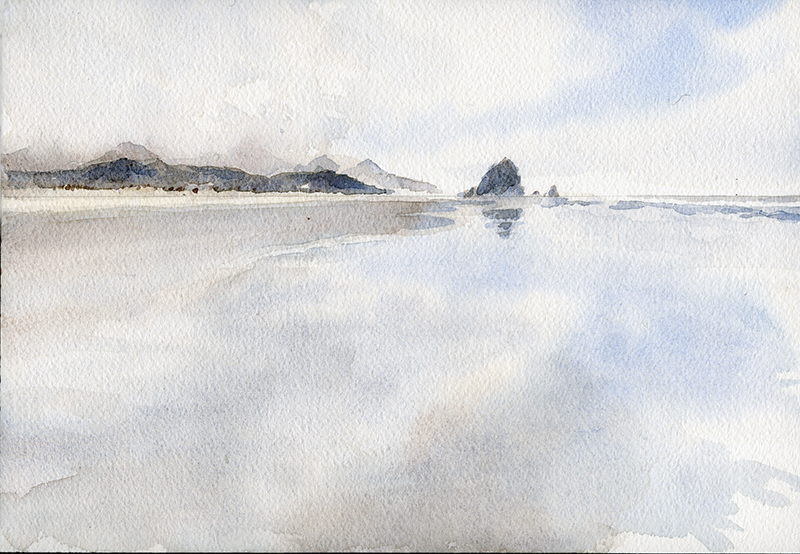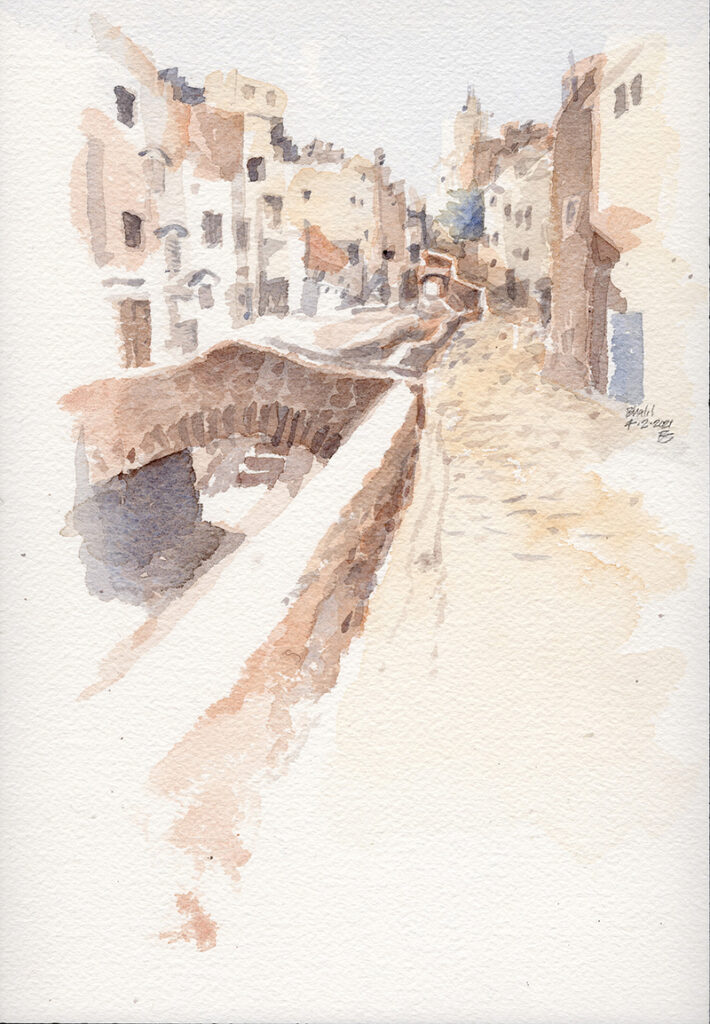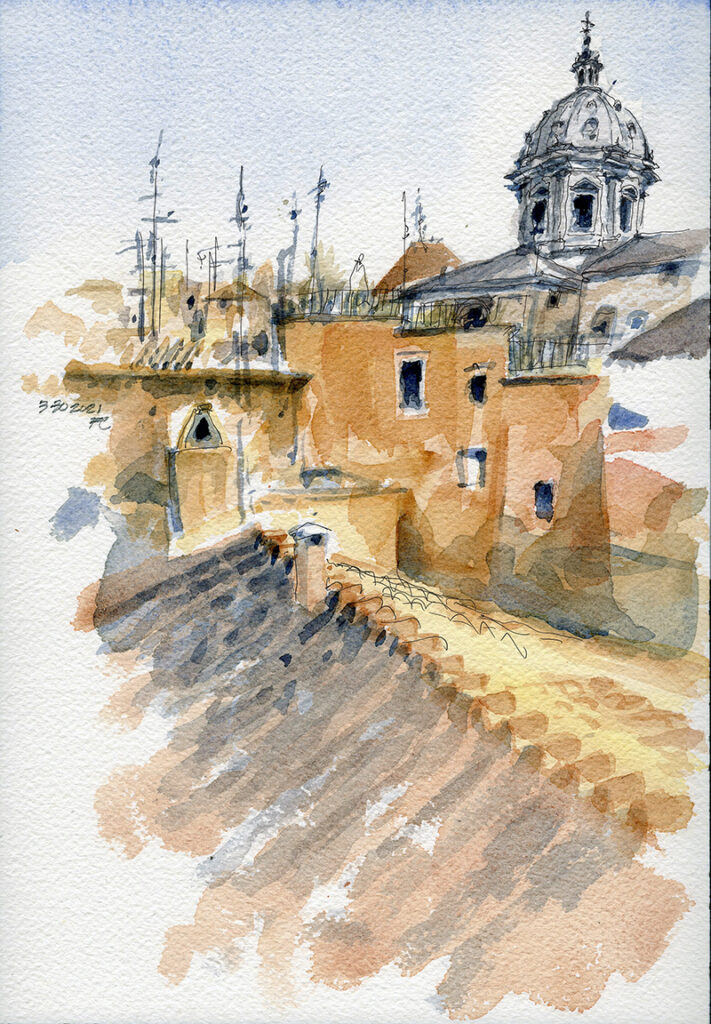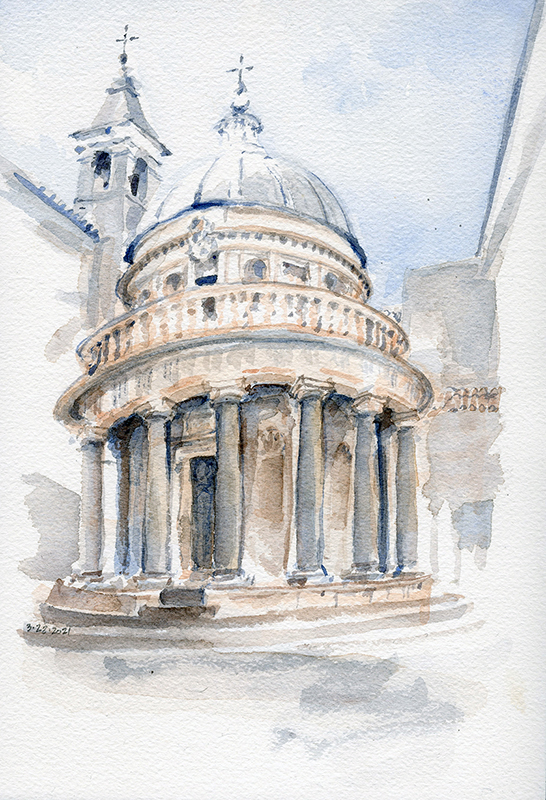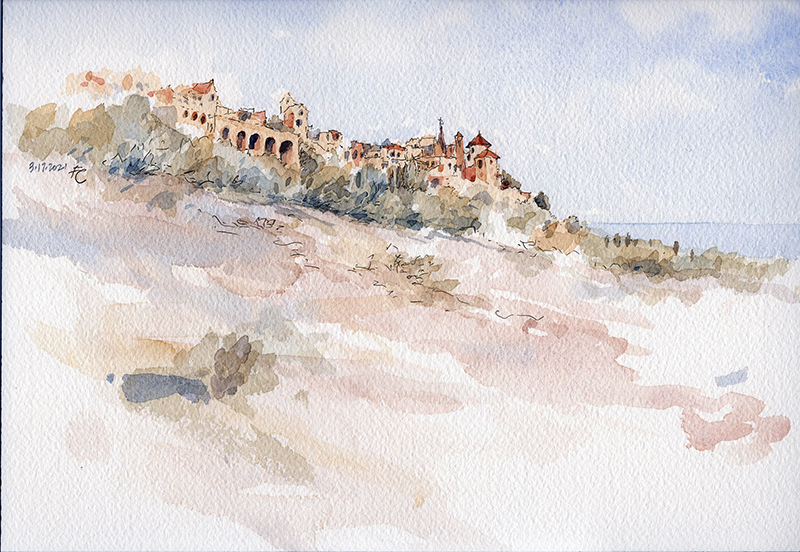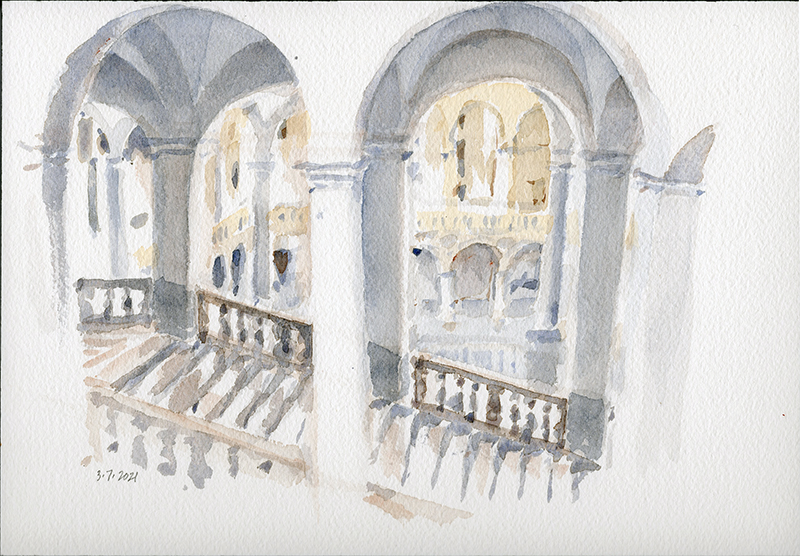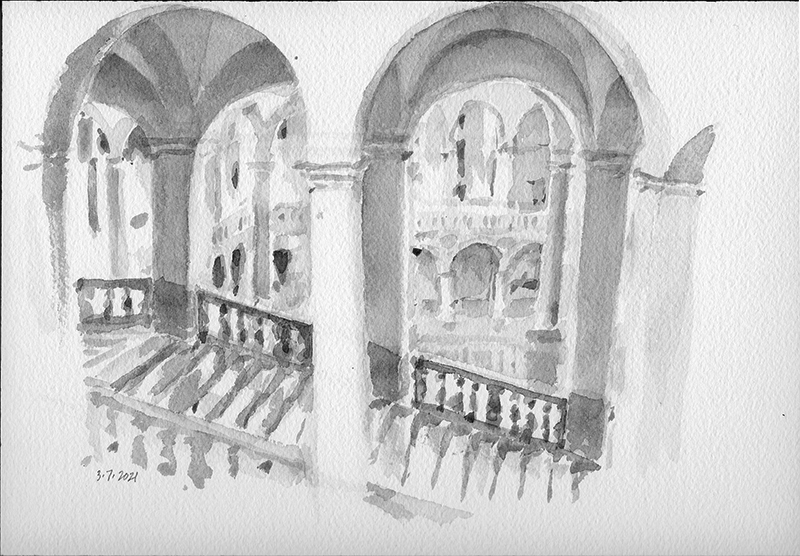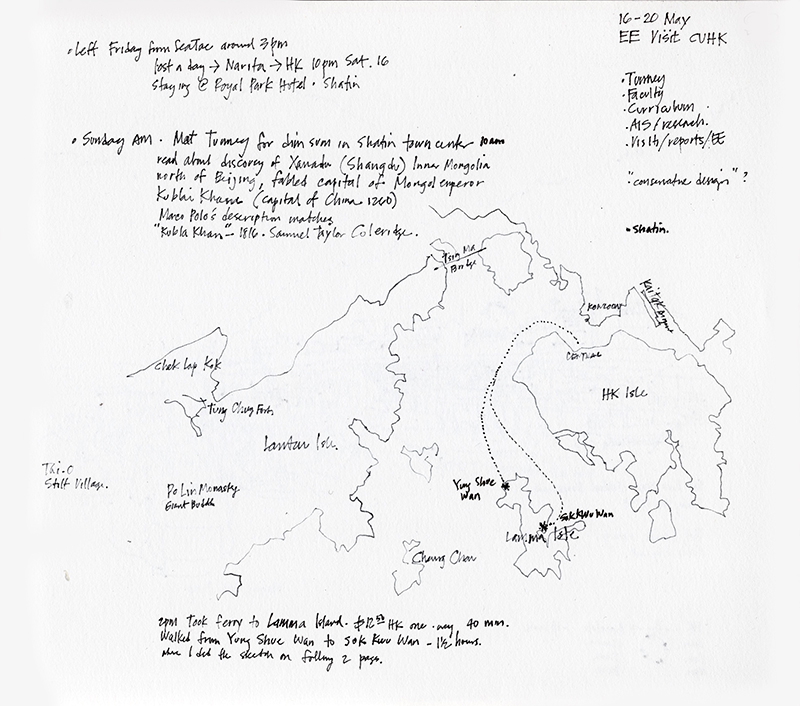
The practice of keeping a journal gives us the ability to go back in time to revisit places and experiences. Here, from 25 years ago, is a map I drew of Hong Kong and its environs, showing the ferry route I took from Central to Sok Kwu Wan on Lamma Island. From there I walked an hour and a half to Yung Shue Wan, where I sketched the scene below.
